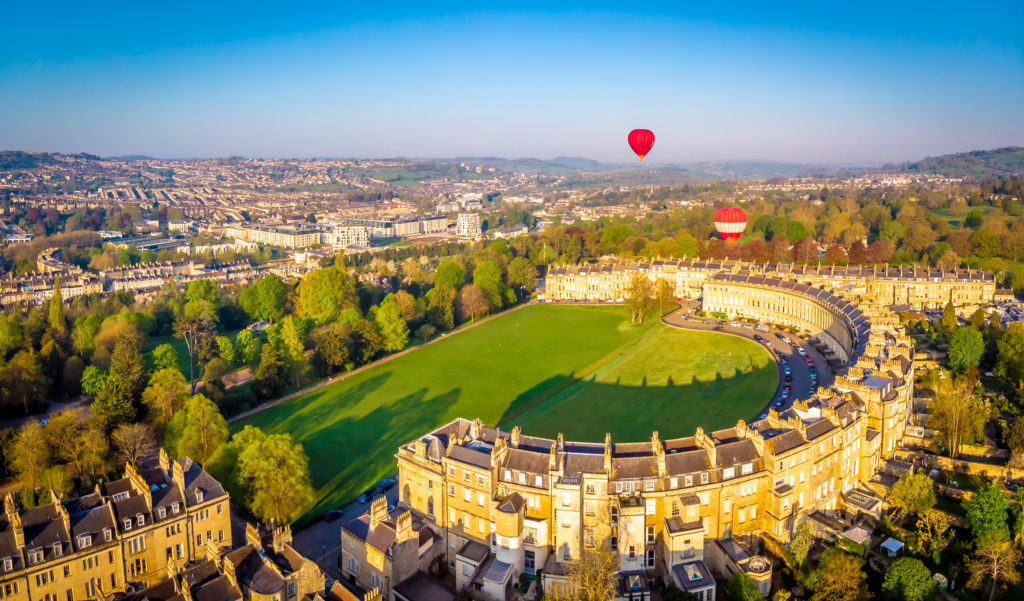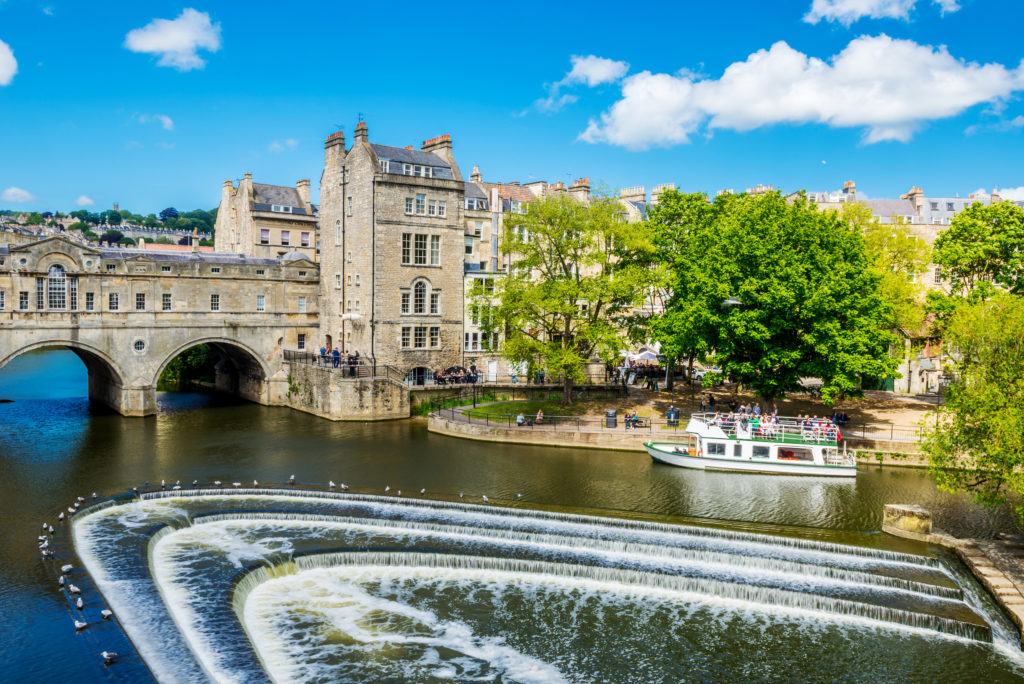About Bath

Bath is the largest city in the county of Somerset, England, known for and named after its Roman-built baths. It is a world-class destination, rich in Roman and Georgian heritage. Bath is in the valley of the River Avon, 97 miles (156 km) west of London and 11 miles (18 km) southeast of Bristol. The entire city has been designated a World Heritage Site by UNESCO in 1987.
The city became a spa with the Latin name Aquae Sulis (“the waters of Sul”) circa 60 AD when the Romans built baths and a temple in the valley of the River Avon, although hot springs were known even before then. The Royal Crescent, The Circus, Pump Room and Pulteney Bridge are among the finest architectural treasures in the world. This comfortably sized city is packed with places to visit. Bath’s rich diversity of museums, galleries, gardens and attractions including the Roman Baths and 15th-century Bath Abbey are all within easy walking distance of each other.
Things to do in Bath
The Roman Baths

Built by the Romans around 2000 years ago, and later rediscovered by the Victorians, the Roman Baths are the must-see tourist attraction in Bath. The baths are fuelled by England’s only mineral hot springs, outputting over a million litres of hot water each day. You can wander the rooms that made up the baths, including the large open air ‘Great Bath’, see Roman, medieval, and Georgian architecture, and learn about the history of Bath Spa. The Baths are superbly maintained and the exhibits are filled with eye-popping archaeology. Allow at least an hour and make sure you get a taste of the “bath” water served in the restaurant or at the end of the tour.
Each delegate will have a ticket to visit The Roman Baths in the conference package.
The Royal Crescent

https://www.royalcrescent.co.uk/
In a city packed with world-class architecture, The Royal Crescent still stands out. A sweeping arc of Georgian townhouses made from warm, honey-coloured stone and fronted by expansive green lawns, it was designed by John Wood the Younger to give well-off residents the feel of country living in the heart of the city.
Pulteney Bridge
https://visitbath.co.uk/listings/single/pulteney-bridge/
Completed in 1774, Pulteney Bridge brings a touch of Italy to Bath. Inspired by Ponte Vecchio in Florence and lined by shops on both sides, it is one of only four such structures in the world. Viewed from across the river, the bridge’s elegant arches are complemented by the curved cascades of the weir just downstream (it looks particularly magical lit up at night).

View of the Pulteney Bridge

View of the Pulteney Bridge
Bath Abbey
Bath Abbey is a parish church of the Church of England and former Benedictine monastery in Bath, Somerset, England. Founded in the 7th century, it was reorganised in the 10th century and rebuilt in the 12th and 16th centuries; major restoration work was carried out by Sir George Gilbert Scott in the 1860s. It is one of the largest examples of Perpendicular Gothic architecture in the West Country.
The Jane Austen Centre
The Jane Austen Centre is in the Georgian city of Bath, Somerset, between the architectural attractions of Queen Square and the Circus, and just a short stroll from Bath Abbey, the Assembly Rooms and the Roman Baths. Come and meet the costumed ‘character’ guides, and enjoy being shown Bath’s fascinating history and its associations with Jane Austen and her family. Here you will find out more about Jane Austen, her time in Bath and how the city shaped her work. You can also dress up in Regency costume, taste Regency-recipe biscuits, sample perfumes from the era, try your hand at writing with a quill and ink, have your photo taken with our world famous waxwork, try our delightful ‘Tea With Mr Darcy’ in the Regency Tea Room, and browse our bespoke Giftshop.
Sally Lunn’s House
Sally Lunn’s is much more than a world famous tea and eating house in the centre of the wonderful city of Bath England. This historic building is one of the oldest houses in Bath. The kitchen museum shows the actual kitchen used by the legendary young Huguenot baker Sally Lunn in Georgian Bath to create the first Bath bunn – an authentic regional speciality now known the world over. A taste of this Bath original is a vital part of any visit.
You can find more about the guide about visiting bath here: https://visitbath.co.uk/
